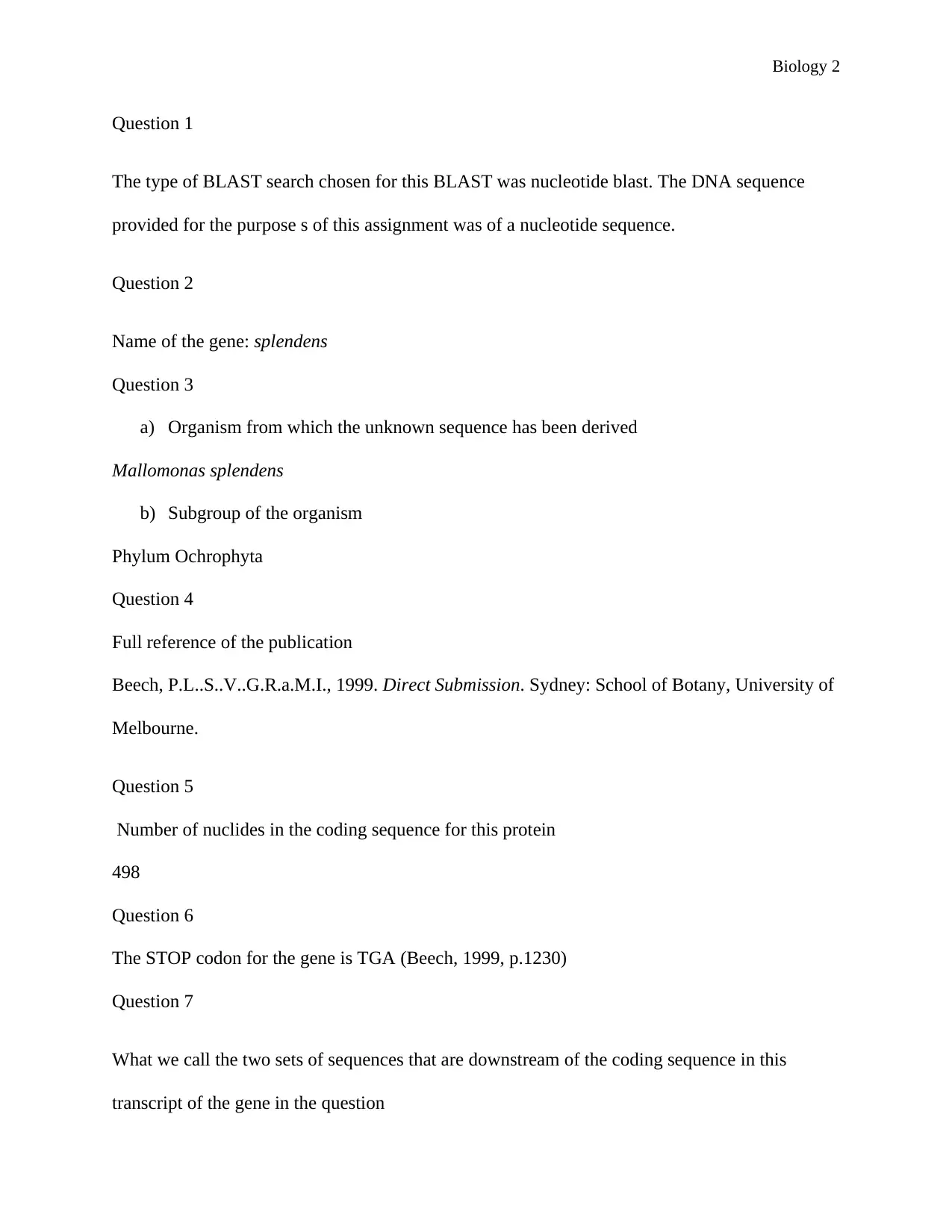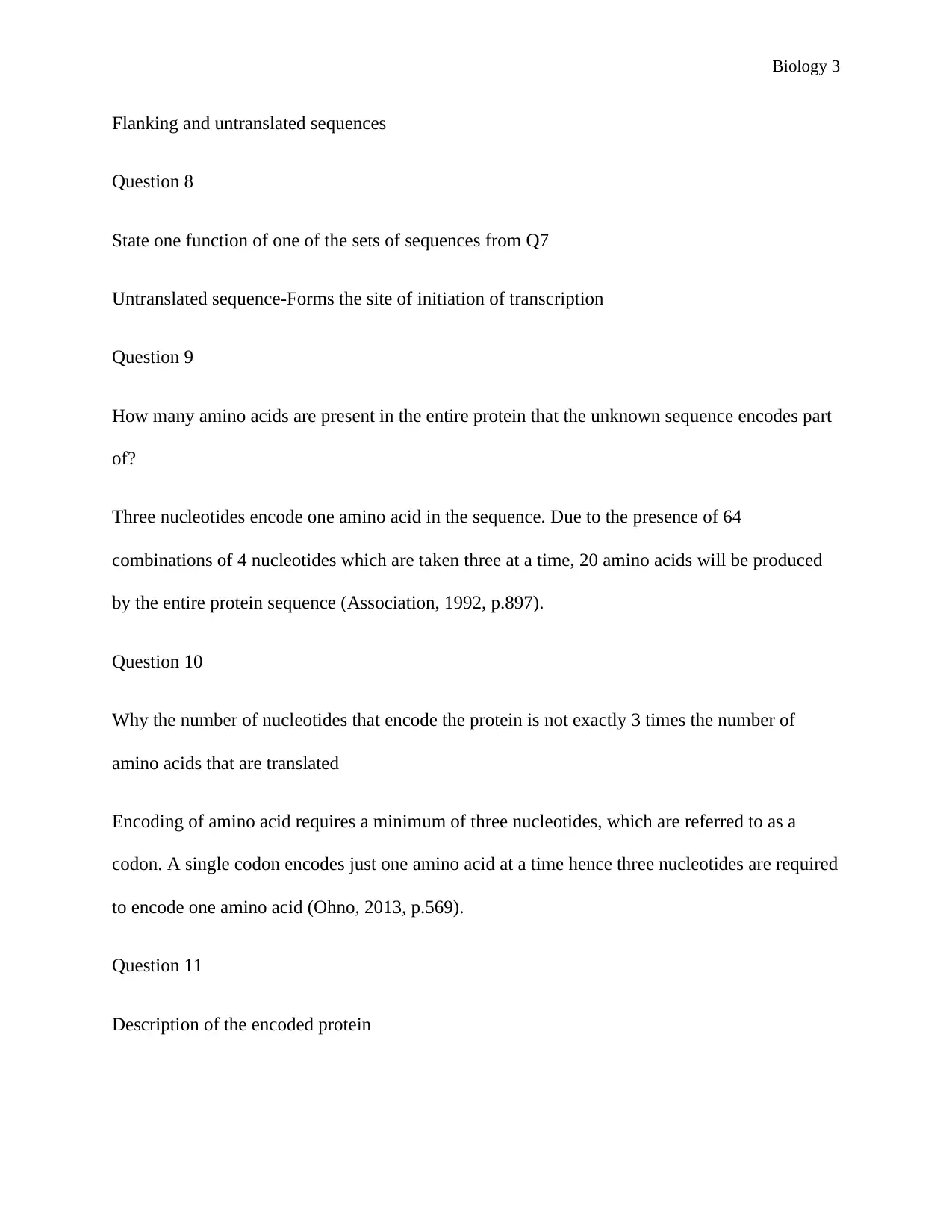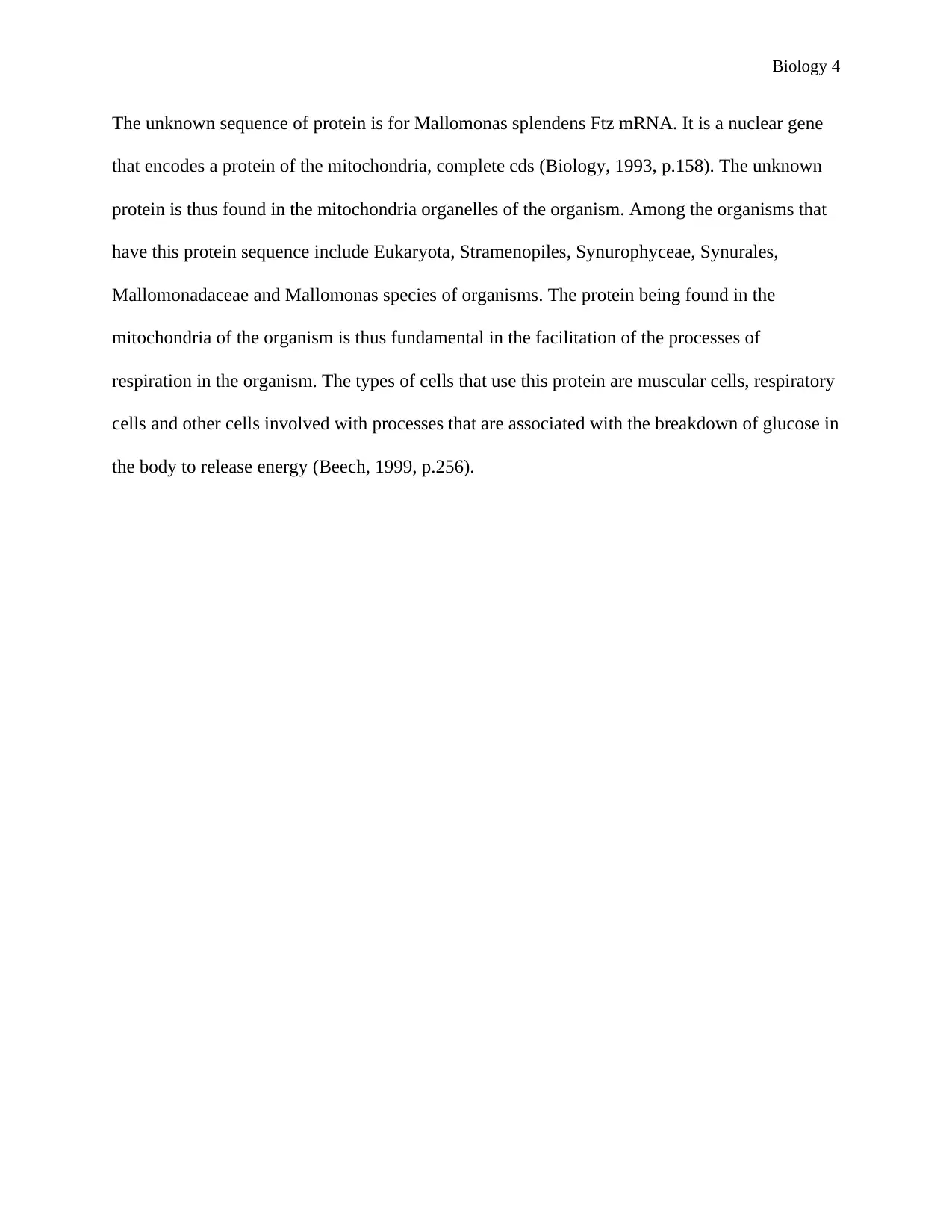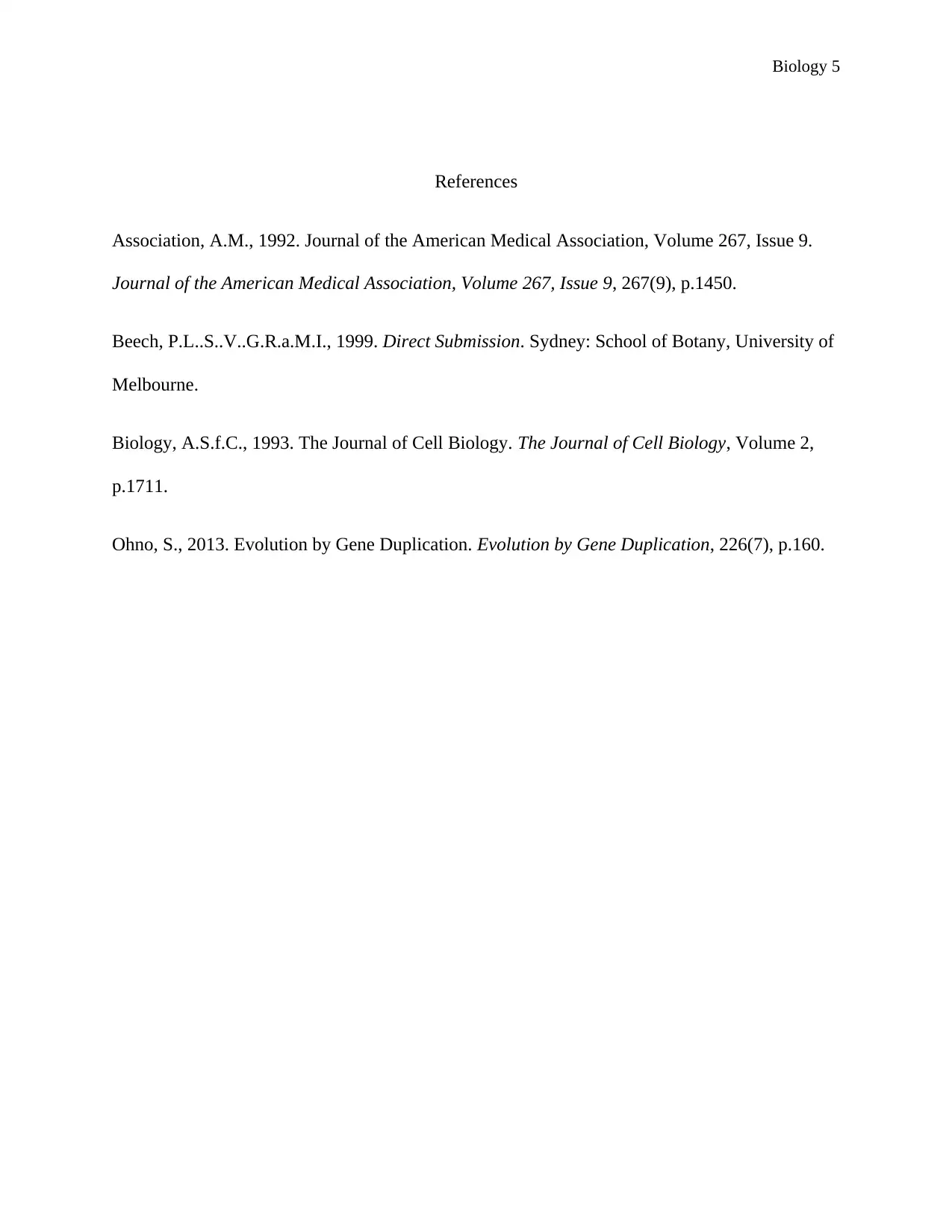Biology Assignment: Analysis of Mallomonas splendens gene sequence
VerifiedAdded on 2020/05/16
|5
|568
|422
Homework Assignment
AI Summary
This Biology assignment provides a detailed analysis of a gene sequence from Mallomonas splendens. The assignment begins with the identification of the type of BLAST search used, followed by identifying the organism and its subgroup. The solution then delves into specifics such as the number of nucleotides in the coding sequence, the STOP codon, and the function of the untranslated sequences. Further, it explores the number of amino acids encoded by the gene and the reason behind the relationship between the number of nucleotides and amino acids. The assignment concludes with a description of the encoded protein, its location, and the types of cells that utilize it. References are also included to support the findings. This assignment provides a comprehensive understanding of the gene's function and its role within the organism.
1 out of 5








![[object Object]](/_next/static/media/star-bottom.7253800d.svg)